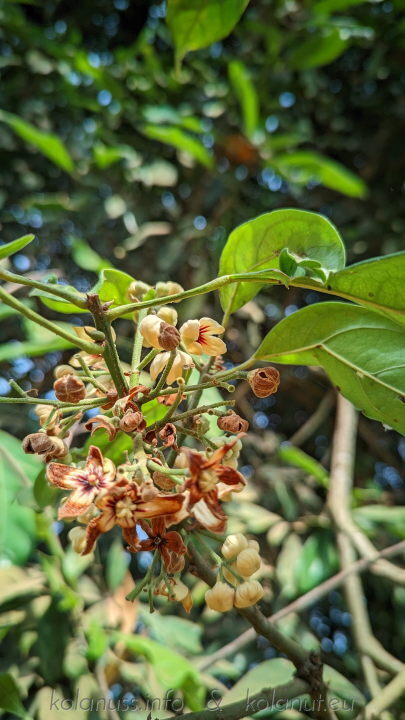Domain: Eukaryota (Organisms with a cell nucleus)
Kingdom: Plantae (Plants)
Division: Angiospermae (Flowering plants)
Class: Eudicotyledoneae (Dicotyledonous plants)
Order: Malvales (Mallow-like)
Family: Malvaceae (Mallow family)
Subfamily: Sterculioideae (Sterculia-like)
Genus: Cola Species: Cola nitida, Cola acuminata, Cola verticillata, Cola gigantea, Cola ballayi, etc.
Explanations of the classification:
-
Domain Eukaryota: The kola nut belongs to the eukaryotes, meaning its cells have a nucleus and membrane-bound organelles.
-
Kingdom Plantae: As a plant, the kola nut is a photosynthetic organism.
-
Division Angiospermae: The kola nut is a flowering plant, which differs from gymnosperms in that the seed is enclosed within a fruit, formed from the ovary of the flower. Almost all crop plants are flowering plants, and this division boasts the most species among plants.
-
Class Eudicotyledoneae: The kola nut is a dicotyledonous plant, which is evident in the structure of its cotyledons. This is clearly visible when holding a fresh kola nut, as a line runs around the entire nut, allowing it to be easily split into two halves. An exception is Cola acuminata. This subspecies is unique because the number of cotyledons can range from 1 to 6 (rarely more, but 1 is also extremely rare).
-
Order Malvales: This order includes plants with characteristic features such as pinnate leaf veins and five-part flowers. They typically form capsule fruits and become woody rather than shrubby. Many tropical ornamental and crop plants belong to this genus.
-
Family Malvaceae: The mallow family is a large family. The most well-known members include cotton, cocoa, and hibiscus. Previously, the kola nut was classified in the family Sterculiaceae (Sterculia family), which is now integrated into the mallow family.
-
Genus Cola: The genus Cola comprises 134 species, but only a few are economically utilized.
-
Species: The most well-known and commonly cultivated species is Cola nitida. Cola acuminata is particularly culturally significant in Nigeria. Other species play minor roles.

 DE
DE  EN
EN 